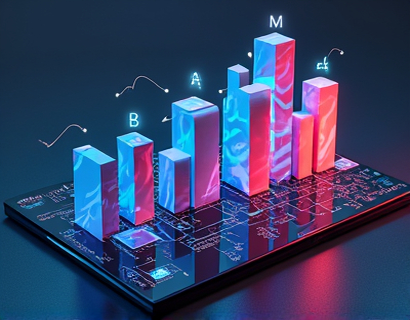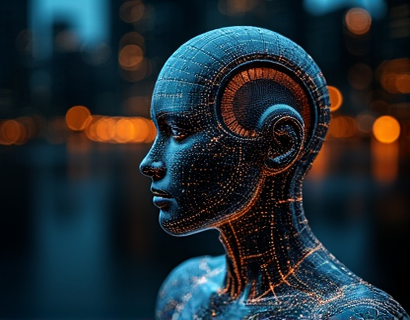Enhancing Educational Access for Children and Students Through Safe AI Chat Interfaces
The integration of artificial intelligence in educational settings has opened new avenues for learning, particularly for children and students. A specialized AI-driven chatbot designed with safety and verification in mind offers a unique platform for young learners to access industry insights and workshop knowledge. This article delves into the insights from specialized workshops and the broader industry knowledge, highlighting how such AI chat interfaces can revolutionize the way children and students engage with educational content.
The primary goal of these AI chat interfaces is to provide a secure and verified environment where children and students can interact with specialized information. The chatbot is engineered to deliver content that is not only informative but also age-appropriate and safe for young users. By focusing on user-friendly interaction, these platforms aim to enhance learning and engagement in a secure setting.
Understanding the Need for Safe AI Chat Access
The digital age has brought about unprecedented access to information, but it has also raised concerns about the safety and reliability of online content, especially for children and students. Traditional educational resources, while valuable, may not always cater to the specific needs and understanding levels of young learners. An AI chat interface tailored for educational purposes addresses these gaps by offering a curated and controlled environment for learning.
One of the key benefits of using an AI chatbot for educational purposes is the ability to provide content verification. Unlike general search engines where the quality and accuracy of information can vary widely, an AI chatbot can be programmed to source content from trusted and verified databases. This ensures that the information provided to children and students is accurate, up-to-date, and relevant to their learning needs.
Specialized Industry Insights for Young Learners
The AI chat interface is designed to offer specialized insights into various industries, making complex concepts accessible to children and students. For instance, in the field of science and technology, the chatbot can explain advanced topics such as robotics, artificial intelligence, and environmental science in simplified terms. This not only broadens the students' knowledge but also sparks their interest in these fields.
In the realm of arts and humanities, the chatbot can provide insights into history, literature, and cultural studies. By engaging with the chatbot, students can explore historical events, literary works, and cultural practices in an interactive and engaging manner. This approach helps in developing a deeper understanding and appreciation of diverse subjects.
Interactive Learning Through AI Chatbot
The interactive nature of AI chatbots makes them an excellent tool for enhancing the learning experience. Unlike passive consumption of information, chatbots encourage active participation from users. Students can ask questions, receive immediate feedback, and engage in conversations that simulate real-world learning scenarios. This interactivity not only makes learning more enjoyable but also more effective.
For example, a student curious about the solar system can ask the chatbot about the planets, their characteristics, and their positions in the solar system. The chatbot can provide detailed information, images, and even interactive quizzes to reinforce the learning. This dynamic interaction helps in retaining information better and fosters a love for learning.
Ensuring Content Verification and Safety
One of the most critical aspects of an AI chatbot designed for educational purposes is the verification of content. The chatbot must be programmed to cross-reference information from multiple reliable sources to ensure accuracy. This multi-layered verification process helps in maintaining the integrity of the information provided to students.
Moreover, the chatbot should be designed with safety features to protect young users. This includes monitoring and filtering out any inappropriate content, ensuring that the interactions remain within educational boundaries. Parental controls and user authentication can further enhance the safety of the platform, allowing parents and educators to monitor and manage the usage.
Customization for Different Age Groups
To cater to the diverse needs of children and students across different age groups, the AI chatbot can be customized to adjust the complexity and depth of the content. For younger children, the chatbot can use simpler language and more visual aids, such as images and animations. For older students, the content can be more detailed and include advanced concepts and discussions.
This adaptability ensures that the educational content remains relevant and engaging for users of all ages. By tailoring the interaction based on the user's age and learning level, the chatbot can effectively support the educational journey of each individual student.
Promoting Critical Thinking and Curiosity
Beyond providing information, the AI chatbot can play a significant role in promoting critical thinking and curiosity among young learners. By posing thought-provoking questions and encouraging students to explore topics further, the chatbot can stimulate intellectual growth. For instance, after providing information about a historical event, the chatbot can ask students to consider the causes and effects of the event and how it has influenced the present.
This approach not only enhances the students' understanding of the subject matter but also develops their analytical and critical thinking skills. By engaging in such discussions, students learn to question, research, and form their own opinions, which are essential skills for their future academic and personal lives.
Integration with Educational Curricula
The AI chatbot can be seamlessly integrated into existing educational curricula, complementing the work done in classrooms. Teachers can use the chatbot as an additional resource to reinforce lessons and provide supplementary materials. This integration ensures that the educational content aligns with the learning objectives set by educators.
For instance, in a science class, the chatbot can offer experiments and projects that students can conduct at home, with step-by-step guidance and explanations. This hands-on approach, supported by the chatbot, can deepen the students' understanding and interest in the subject.
Feedback and Continuous Improvement
The effectiveness of the AI chatbot in educational settings can be continually improved through feedback from users. By collecting input from students, teachers, and parents, the chatbot's developers can identify areas for enhancement and make necessary adjustments. This iterative process ensures that the chatbot remains a valuable and relevant tool for educational purposes.
Feedback can be gathered through various channels, such as direct messages within the chatbot, surveys, and user reviews. Analyzing this feedback helps in refining the content, improving the user interface, and enhancing the overall user experience.
Conclusion
The use of AI chatbots in education represents a significant advancement in how children and students access and engage with learning materials. By providing a safe, verified, and interactive platform, these chatbots can bridge the gap between traditional education and the digital world. As technology continues to evolve, the potential for AI-driven educational tools to transform learning experiences is immense. The key lies in ensuring that these tools are designed with the best interests of young learners in mind, prioritizing safety, accuracy, and engagement.









































